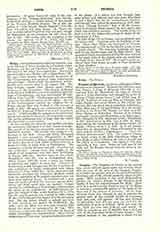

Prusias ad Hypium, titular see, suffragan of Claudiopolis in the Honoriad. Memnon, the historian, says that Prusias I, King of Bithynia (237-192 B.C.), captured from the Heracleans the town of Kieros, united it to his dominions and changed its name to Prusias (“Frag. histor. Graec.”, coll. Didot, frag. 27 and 47; fragment 41 treats of Kios or Guemlek, also called Prusias, and not of Kieros, as the copyist has written; this has given rise to numerous confusions). Pliny (Hist. nat., V, 43) and Ptolemy (V, i, 13) merely mention it, one below Mt. Hypius, the other near the River Hypius or Milan-Sou. Several of its bishops are known: George (not Hesychius, as Le Quien says), 325; Olympius in 451; Dometius in 681; Theophilus in 787; Constantine in 869; Leo in 879; St. Paul, martyred by the Iconoclasts in the ninth century (Le Quien, “Oriens christ.”, I, 579). It is not known when this see disappeared, which still existed in the tenth century (Gelzer, “Ungedruckte….Texte der Notitiae episcopatuum”, 554). The ruins of Prusias are found today at the little Mussulman village of Eski Bagh or rather Uskub in the caza of Duzdjé and the vilayet of Castamouni. The region is very rich, especially in fruit trees. Ruins are still seen of the walls and the Roman theatre forty-six miles in circumference.
S. VAILHÉ

